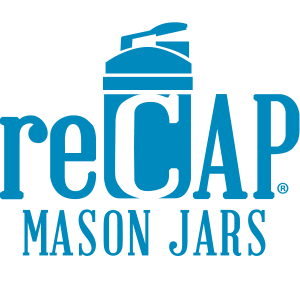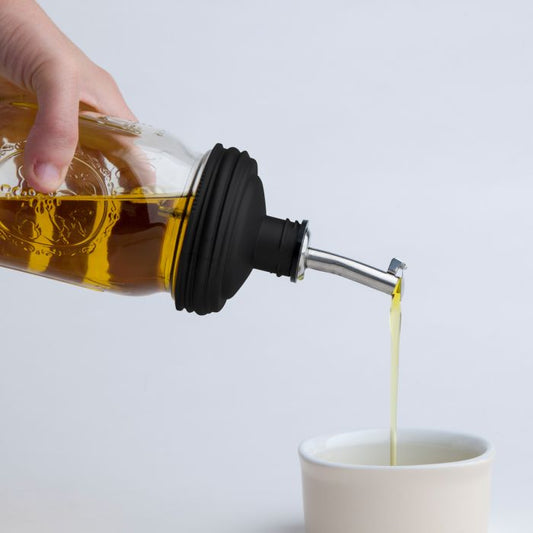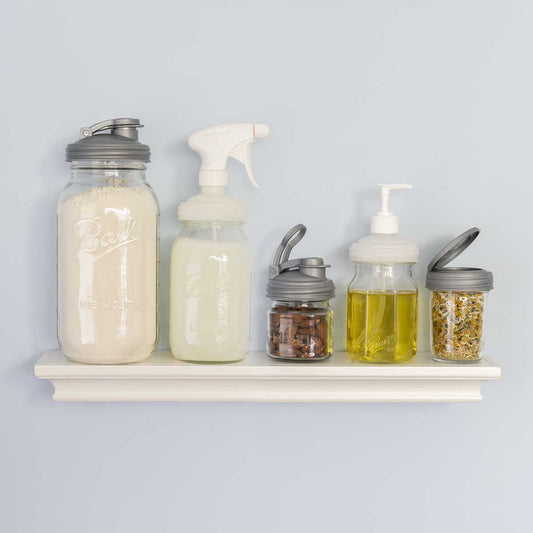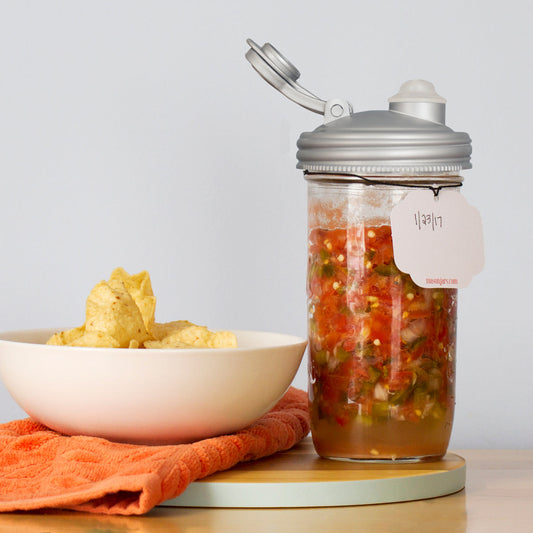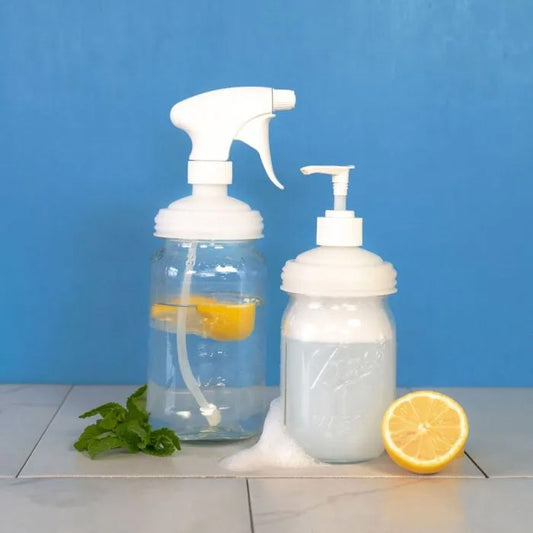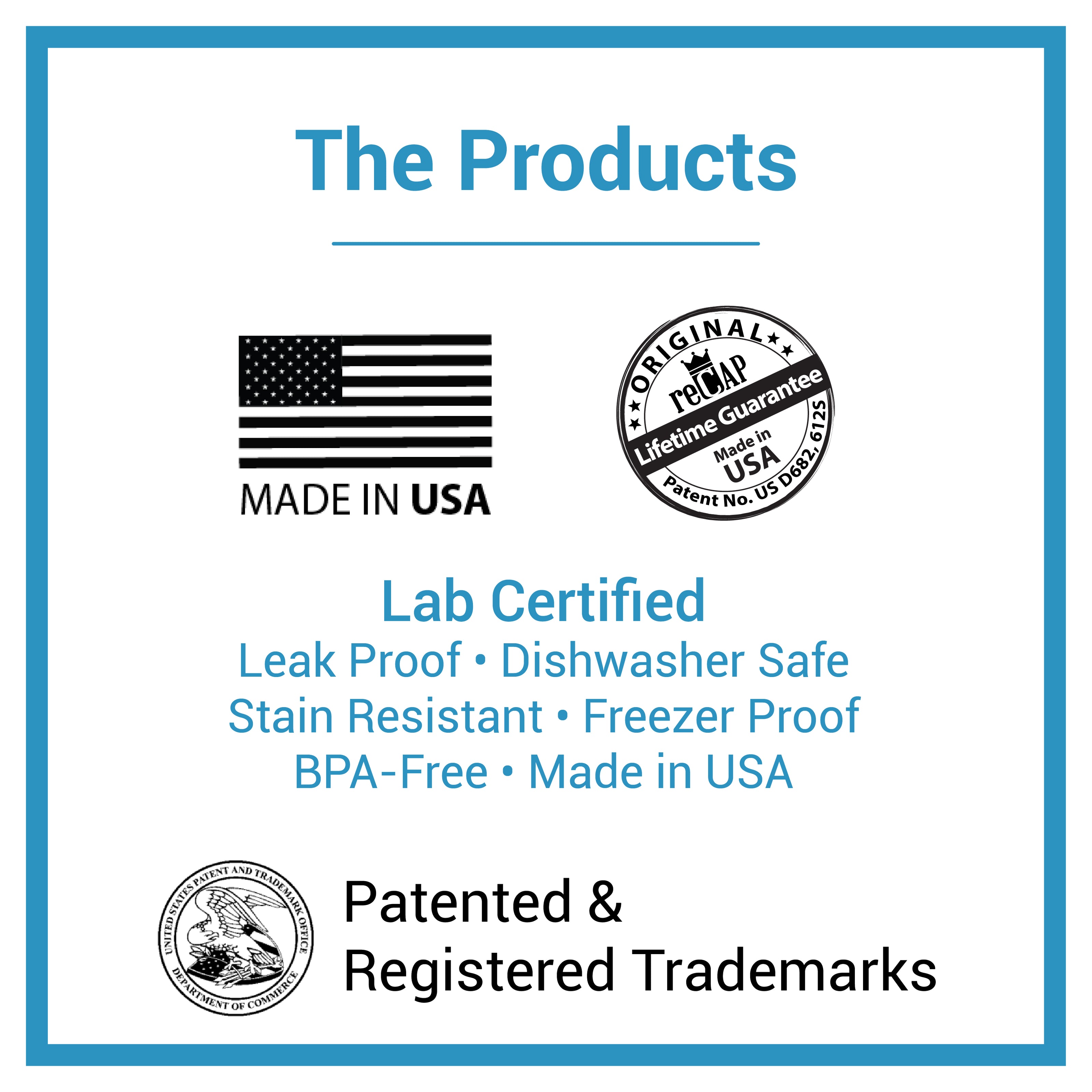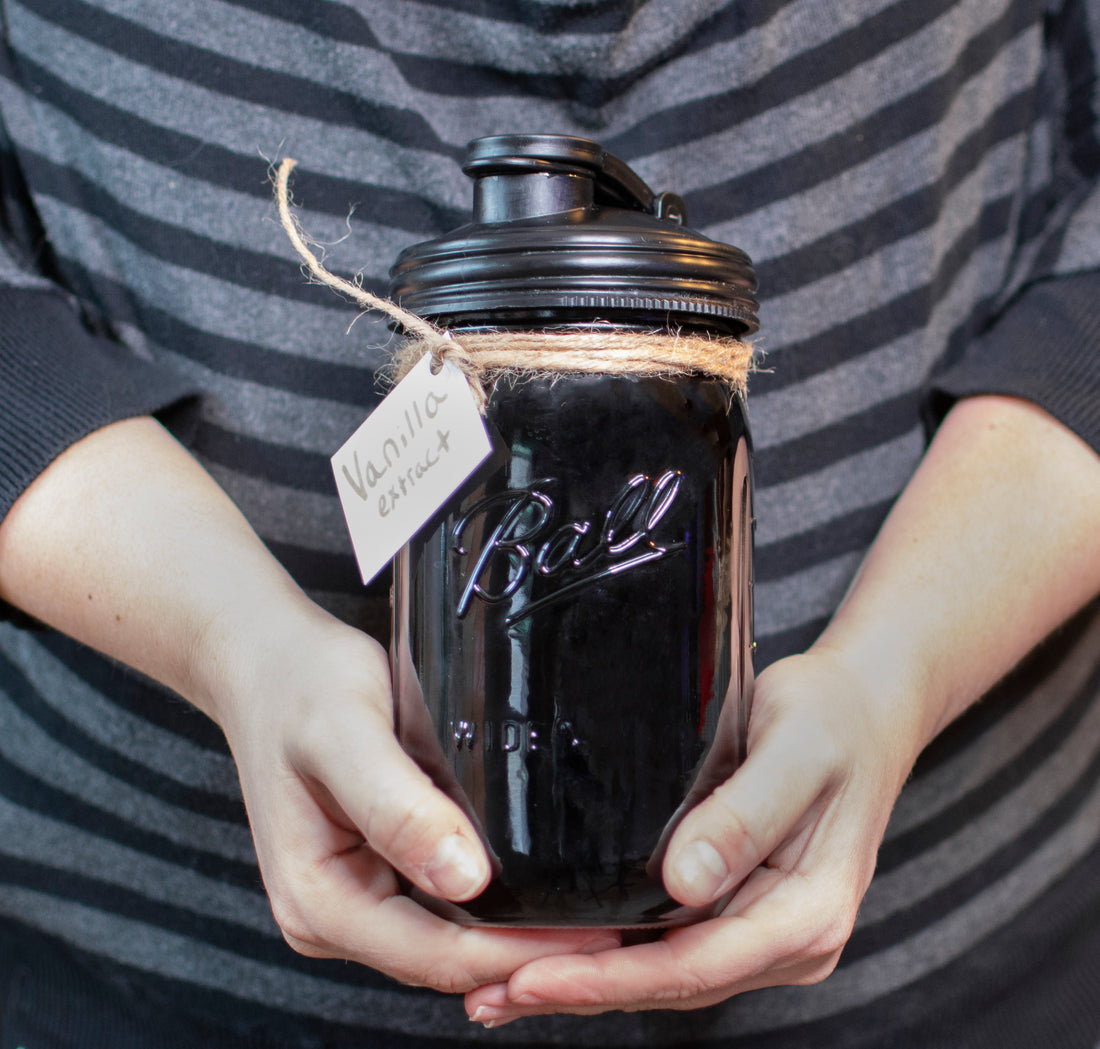
Vanilla Extract 101: What It Is, Where It Comes From, How to Make It
Share
Are you interested in learning more about vanilla and why its extract can cost up to $20 for an 8-ounce bottle? In this blog, Mason Jars takes an in-depth look at all-things vanilla, including information on its cost, uses, and recipes.
Today, vanilla extract is a staple of many people’s pantries and spice cabinets. It’s in everything from cookies and cake to candy and ice cream. But few realize the long journey vanilla takes to go from bean pod to extract.
Interestingly, vanilla doesn’t just have a special place in our favorite desserts. It can also be found in cleaning supplies, fragrances, and medicines. However, despite its popularity and prevalence, vanilla is a rarity due to its slow plant growth and labor-intensive production process. According to GlobeNewswire, “the global vanilla market accounted for $510 million in 2018 and is expected to reach around $735 million by 2026.”
Are you interested in learning more about vanilla and why its extract can cost up to $20 for an 8-ounce bottle? In this blog, Mason Jars takes an in-depth look at all-things vanilla, including information on its cost, uses, and recipes.
VARIATIONS OF VANILLA BEANS

First and foremost, there is a difference between vanilla bean and vanilla. Vanilla bean refers to the fruit of an orchid plant typically found in Mexico, the Caribbean, northern South America, and Central America. While there are many varieties of vanilla beans, there are four that stand out among the rest due to their powerful fragrance, versatility, and taste:
1. Madagascar
Madagascar vanilla beans, also known as Bourbon or Malagasy vanilla beans, are rich in flavor because they possess higher concentrations of the chemical component vanillin. Contrary to the name, a Bourbon vanilla bean does not contain any Bourbon, although its extract reads high in alcohol content. They have a woody flavor. Vanilla production in Madagascar tends to have a lower cost and often uses a steam process to create the vanilla extract.
2. Mexican
Mexican vanilla beans are similar to Madagascar vanilla beans, but the latter is a bit stronger in flavor. However, both beans and their extracts are often used in vanilla ice cream and other desserts. Mexican vanilla bean extract derives from the Tonka Tree, and there have been debates on whether or not the vanilla bean is pure or an imitation. At the same time, Mexican vanilla is the most popular form of vanilla.
3. Tahitian
Tahitian vanilla beans are especially popular for their fragrance and flavor. However, they have a lower amount of vanillin, the compound responsible for the primary vanilla taste, than that of the Mexican and Madagascar beans. Instead, Tahitian vanilla beans have a greater amount of the chemical compound coumarin, giving it a sweeter, fruitier flavor. It has also been said that Tahitian vanilla beans taste like cherries, but their taste can be easily overwhelmed by alcohol during the process of making vanilla extract. Tahitian beans are the most expensive of the four.
4. Ugandan
Ugandan vanilla beans come from Vanilla Planifolia, known as the flat-leaved vanilla orchid. These vanilla beans have a bolder flavor due to their high vanillin content, making their extract perfect for rich, sweet desserts. While they have an earthy taste, Ugandan vanilla also features hints of milk chocolate. Out of the four types of vanilla beans listed, Ugandan vanilla beans are the rarest.
WHY IS VANILLA SO COSTLY?

Most of the world’s vanilla is produced in Madagascar, even though it can only grow and pollinate naturally in Mexico. In Madagascar and other areas of the world, a vanilla orchid takes an astonishing three to five years to develop and flower! Then, the plant’s flowers require hand pollination to produce vanilla beans, but you must act quickly—a vanilla orchid’s flower has a 24-hour pollination window.
Once the orchid is pollinated, the vanilla bean takes up to nine months to mature, and it cannot be picked too early. From there, the bean must be “killed” by sunlight exposure, freezing temperatures, or scratching to stop it from ripening. What follows next is the curing process.
The curing process of vanilla beans begins 24 hours after the bean is picked. First, the bean must sweat to break down its vanillin and glucose components. Sweating occurs when the vanilla bean is wrapped in a cloth and put in a container where it will be warm for several weeks.
Lastly, the vanilla beans must undergo a carefully-monitored drying process and then be wrapped in wax paper, where they will rest in a container for at least a month. Because of this, the production of vanilla beans is an intricate and labor-intensive process, which makes purchasing them more expensive.
In recent years, tropical storms have plagued Madagascar. Cyclone Enawo, which struck Madagascar in 2017, destroyed 80-90% of the land and vanilla crop in certain regions. This catastrophic event resulted in vanilla prices rising to $600 a kilogram.
Climate change is also negatively affecting the production of vanilla beans worldwide. Since vanilla orchids take three to four years to mature, crop destruction causes vanilla supply to decrease while there remains a high demand. In turn, the price of vanilla increases.
HOW TO MAKE YOUR OWN VANILLA
Did you know that you can make your own vanilla extract at home? It’s easier than you may have thought! And, if you already own a Mason jar at home, vanilla extract only requires two ingredients: vanilla beans and alcohol of your choosing. To make vanilla extract:
- Gather materials: 3-6oz of vanilla beans ($30-70), a 750ml bottle of alcohol (rum, vodka, or bourbon ranging from $10-25), and a Mason jar ($0-5). An easy way to remember the ratio is 1 cup of alcohol per 1oz of beans!
- Process: place the vanilla beans into a Mason jar, then fully submerge them in alcohol.
- Finish: top off your mixture with alcohol whenever the vanilla beans begin to show, and make sure to shake the mixture once or twice a week for optimal flavor.
Vanilla extract should be stored at room temperature and out of direct sunlight while processing. The extract can be ready in as little as eight weeks, but it is recommended that the mixture should rest for at least 9-12 months for the best flavor.
Good news: vanilla extract can also be made without the use of alcohol! For this process, you will instead need vanilla beans, water, and vegetable glycerin. Another alternative is vanilla beans, salt, and filtered water. When making vanilla extract using either of these methods, the mixture will take 12-24 months to extract, and it has a shelf life of 14-24 months. Alcohol is the most popular method of creating vanilla extract because it efficiently draws out the beans’ flavor.
Once you’ve made your extract, vanilla can be used for:
- Treatment of intestinal gas, minor burns, and fevers
- Cocktails, smoothies, coffees, and other beverages
- Baked goods and desserts
- Insect repellent
- Hair and beauty products
- Household cleaning products
- Air fresheners and other fragrances
*Note: Vanilla extract should not be consumed on its own. Children specifically should not consume the extract as they run the risk of alcohol poisoning if they have too much. Additionally, the medicinal benefits of vanilla extract have not yet been scientifically or FDA approved.
DIFFERENT RECIPES WITH VANILLA

Vanilla beans and their extract have uses beyond simple baked goods and desserts. In fact, you can use these products to create alcohol, sugar, and paste.
1. Kahlua
Kahlua is a 4-ingredient, coffee-based liquor from Veracruz, Mexico. Keeping in mind that this is only one homemade recipe, it can be created using:
- Two and a half cups of freshly-brewed coffee
- Four cups of sugar
- Two and a fourth cups of rum
- One-inch of a vanilla bean that has been cut in half
If a vanilla bean is not available to you, you may swap it out with one tablespoon of pure vanilla extract. Specifically, the recipe calls for brewing the hot coffee and stirring until the added sugar is dissolved, then you may add the rest of the ingredients. After doing so, the mixture should be stored in a Mason jar in a cool place for 2 to 3 weeks. Once the time is up, strain the mixture and remove the vanilla beans before consumption! This recipe will create about 8 cups.
2. Vanilla Paste
Vanilla bean paste is made using:
- 30 vanilla beans
- Six tablespoons of vanilla extract
- One and two-thirds cups of agave nectar (maguey syrup)
All of the ingredients should be added at once to a food processor until smooth, then poured over a strainer into a Mason jar to remove any lumps. Once this process is finished, be sure to store your paste in the refrigerator! This recipe is excellent for desserts and other baked goods.
3. Vanilla sugar
Vanilla sugar is a simple recipe that calls for:
- One vanilla bean
- Two cups of granulated sugar
First, cut the vertical vanilla bean in half and add its contents to the Mason jar full of sugar. Then, add the vanilla bean to the sugar and stir the contents together. The Mason jar should then be covered and left to sit for about a week. Vanilla sugar is the perfect alternative for plain sugar in many dessert recipes!
